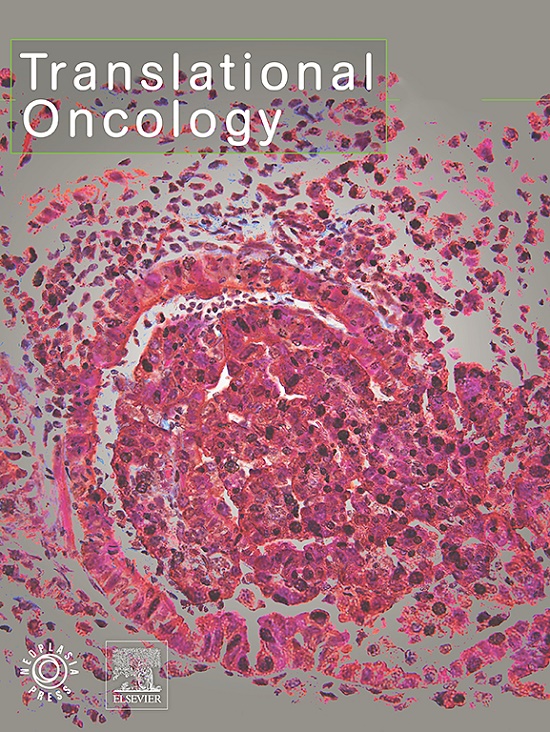Lnc-PHF3-3 aggravates the chemoresistance of osteosarcoma cells to doxorubicin via the miR-142-3p/HMGB1 axis
IF 5
2区 医学
Q2 Medicine
引用次数: 0
Abstract
Background
Chemoresistance poses a significant challenge in the treatment of osteosarcoma (OS). Long non-coding RNAs (lncRNAs) have emerged as crucial regulators of cancer biology. Despite accumulating evidence linking dysregulation of lncRNAs to chemoresistance, the specific regulatory functions and complexities involved in lncRNA-mediated modulation of doxorubicin-based chemotherapy in OS remain understudied.
Methods
We examined expression levels of lncRNA Lnc-PHF3-3 and miR-142-3p in OS tissues and cell lines by lncRNA microarray profiling and qRT-PCR. Gain-of-function and loss-of-function assays were performed to examine the effect of lncRNA Lnc-PHF3-3 and miR-142-3p on chemoresistance of OS cells. Using fluorescence reporter and western blot assays, we also explored the possible mechanisms of Lnc-PHF3-3 in OS cells.
Results
This study aimed to investigate key lncRNAs associated with chemoresistance in OS and identify potential therapeutic targets for patients with chemoresistant OS. To identify chemoresistance-related lncRNAs, microarray analysis was conducted using drug-resistant/drug-sensitive OS cell lines and chemoresistant/chemosensitive OS tissues. Among the identified candidates, a novel lncRNA called Lnc-PHF3-3 was found to be upregulated in doxorubicin-resistant OS cell lines and chemoresistant OS patients. Functional characterization revealed that Lnc-PHF3-3 promoted doxorubicin resistance both in vitro and in vivo. Further investigation revealed that Lnc-PHF3-3 acted as a sponge for microRNA miR-142-3p, and overexpression of miR-142-3p resulted in reduced chemoresistance. Additionally, the high mobility group box 1 (HMGB1) gene was identified as a direct and functional target of miR-142-3p.
Conclusions
We conclude that Lnc-PHF3-3 contributes to doxorubicin resistance in OS by sequestering miR-142-3p and subsequently enhancing HMGB1 expression.

背景抗化疗性是骨肉瘤(OS)治疗过程中的一个重大挑战。长非编码 RNA(lncRNA)已成为癌症生物学的关键调控因子。尽管有越来越多的证据表明lncRNAs的失调与化疗耐药性有关,但lncRNA介导的OS中多柔比星化疗调控的具体调控功能和复杂性仍未得到充分研究。方法我们通过lncRNA微阵列分析和qRT-PCR检测了OS组织和细胞系中lncRNA Lnc-PHF3-3和miR-142-3p的表达水平。进行了功能增益和功能丧失试验,以研究lncRNA Lnc-PHF3-3和miR-142-3p对OS细胞化疗耐药性的影响。结果本研究旨在研究与OS化疗耐药性相关的关键lncRNA,并确定化疗耐药性OS患者的潜在治疗靶点。为了鉴定与化疗耐药相关的lncRNA,研究人员使用耐药/药敏OS细胞系和化疗耐药/药敏OS组织进行了芯片分析。在确定的候选基因中,发现一种名为Lnc-PHF3-3的新型lncRNA在多柔比星耐药的OS细胞系和化疗耐药的OS患者中上调。功能表征显示,Lnc-PHF3-3 在体外和体内都促进了多柔比星耐药性的产生。进一步研究发现,Lnc-PHF3-3是microRNA miR-142-3p的海绵,过表达miR-142-3p可降低化疗耐药性。结论我们得出结论,Lnc-PHF3-3通过封存miR-142-3p并随后增强HMGB1的表达,导致了OS的多柔比星耐药性。
本文章由计算机程序翻译,如有差异,请以英文原文为准。
求助全文
约1分钟内获得全文
求助全文
来源期刊

Translational Oncology
ONCOLOGY-
CiteScore
8.40
自引率
2.00%
发文量
314
审稿时长
54 days
期刊介绍:
Translational Oncology publishes the results of novel research investigations which bridge the laboratory and clinical settings including risk assessment, cellular and molecular characterization, prevention, detection, diagnosis and treatment of human cancers with the overall goal of improving the clinical care of oncology patients. Translational Oncology will publish laboratory studies of novel therapeutic interventions as well as clinical trials which evaluate new treatment paradigms for cancer. Peer reviewed manuscript types include Original Reports, Reviews and Editorials.
 求助内容:
求助内容: 应助结果提醒方式:
应助结果提醒方式:


